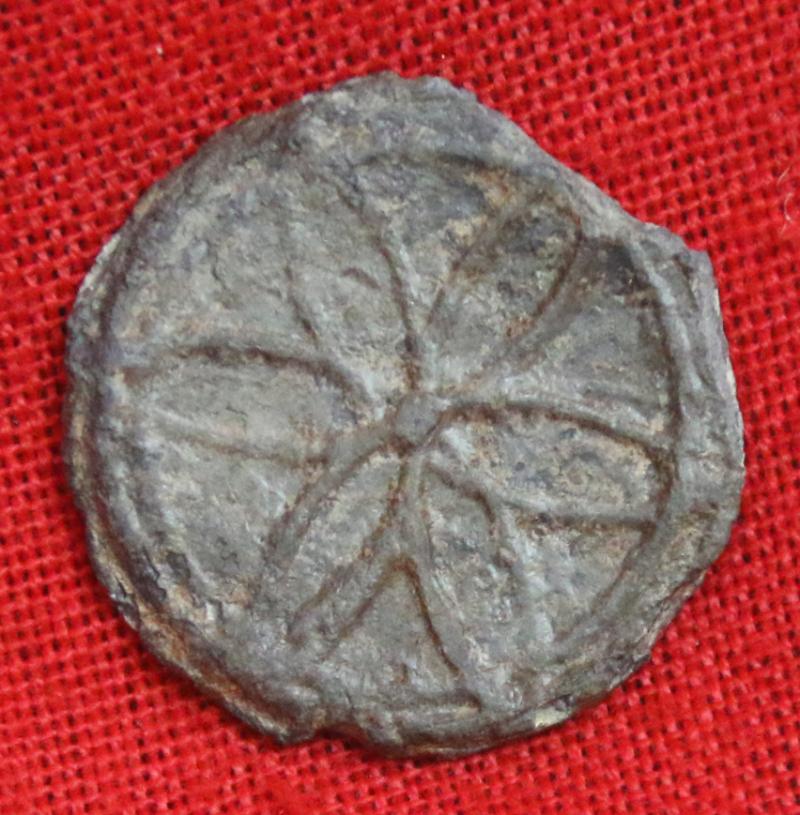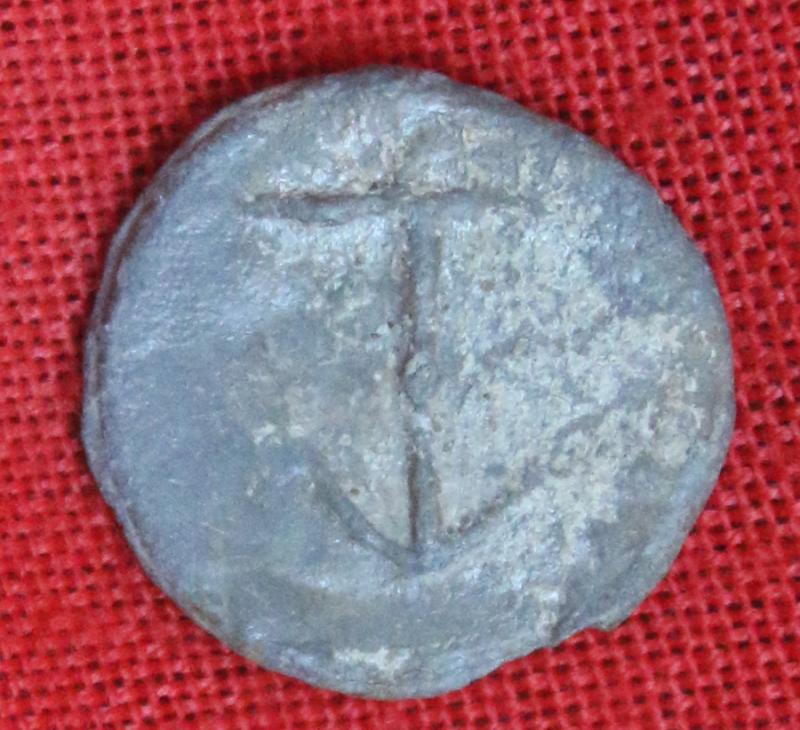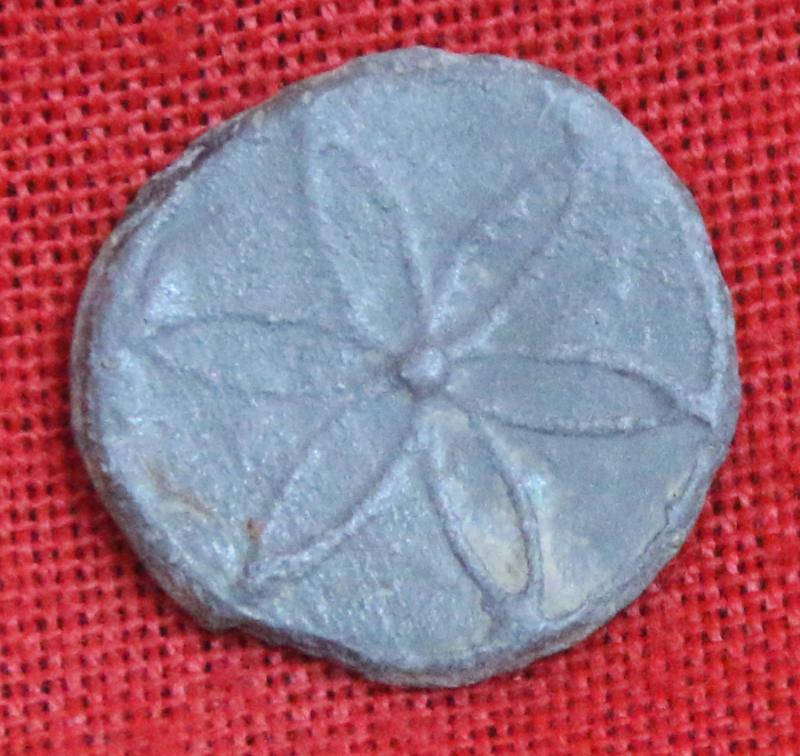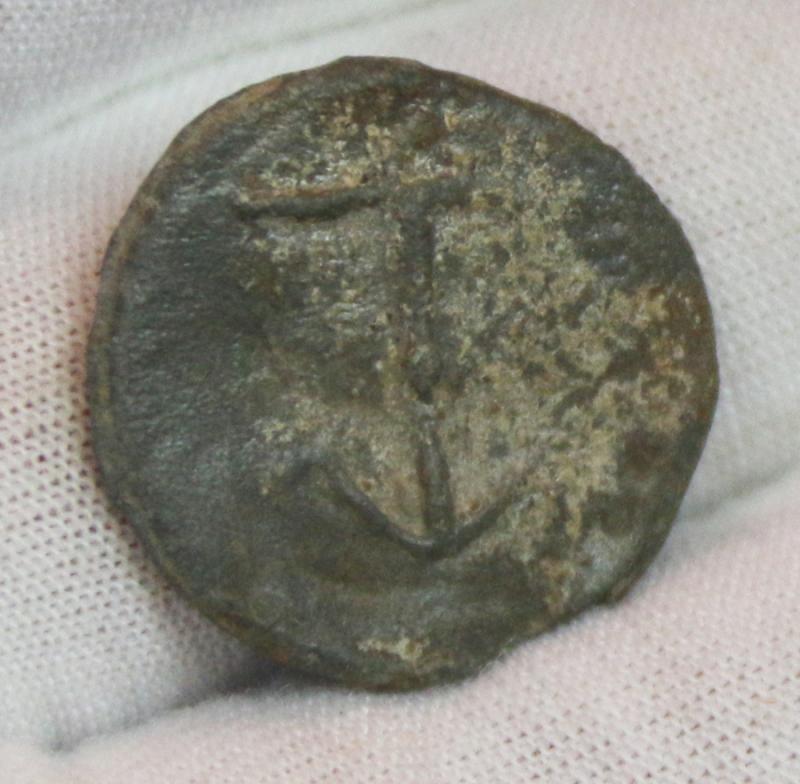Two Early Post Medieval 1/2 Penny and Penny Trade or Barter Tokens, Anchor and Petals Design, 17th to 18th Century
Lead tokens had a wide variety of uses and were made locally, they are therefore hard to date precisely. They could be used as steelyard weights, gaming counters or sometimes even used as unofficial money as in the English Civil War. Then most local parish money was commandeered by the Royalists in Worcester, and lead for musket balls. They are generally considered to be crude agricultural tokens though this may be too simplistic and a number of them could easily have been tavern pieces or barter money, (an early form of truck money). Nearby on the road from Worcester to Great Witley there was a licensed house at Rock Cottage, run by John Ockey in the late 1700s. It would be common practice for local small holders to exchange these tokens for produce at the Public House and for Ockey to sell it on to passersby.
c.1630 to 1800. Lead Tokens date back to Roman times when they were called tesserae. Later Anglo-Saxons also made Lead Tokens. In medieval times they were called “Pilgrim’s Pieces”. Some were very elaborate and were handed out by monks at monasteries to pilgrims as a memento. During the English Civil War copper coinage was scarce so local people turned to making their own unofficial money. They were usually made of Lead and small to about 20 mm in diameter and about 2-3 mm thick so that soldiers would not seize them to melt down to make musket balls. The monetary value for the small kind, around 16mm, was equivalent to a farthing or 1/960th of a pound. The larger tokens, as these are, was double that to a halfpenny, and double again, to a penny
After 1663 penny tokens start to appear. These often bear their value but range widely in size from 14 to 25 mm in diameter. This denomination was prolifically issued in London for use within the new Coffee Houses. There are only a very few rare issues of two penny tokens produced and these were limited to issuers living in London and Southwark. While the majority of tokens are circular in shape after 1668 a few issues were also struck on octagonal, heart-shaped and square/diamond-shaped flans. Considering the circular shaped tokens, which comprises the bulk of the series, their denominations can be closely correlated to their size but not their weight due to a wide variation in their flan thickness.
Halfpenny 20mm, Penny 26mm. Very rare types have been known to fetch over £1,000 today
Code: 24266
120.00 GBP





